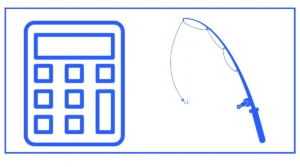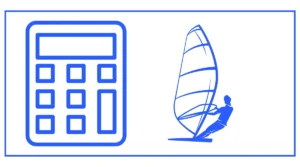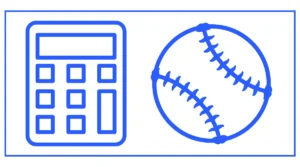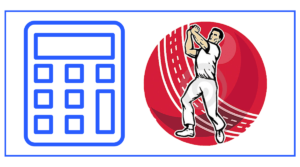VO2 Max:
VO2 at Race:
VO2 at Race (% of VO2 Max):
Are you interested in finding your maximal aerobic capacity value?
The VO2 Max Runners calculator allows you to find out your maximum aerobic capacity. All you need to provide is running distance and time.
It will automatically calculate the VO2 max, VO2 max at race, and % VO2 at race.
You might want to find out how many calories you can burn by walking.
What is VO2 Max?
VO2 max, also known as maximal oxygen uptake or maximal aerobic capacity, is a measure of the maximum amount of oxygen your body can utilize during intense exercise. It’s expressed in milliliters of oxygen per kilogram of body weight per minute (ml/kg/min). This metric is widely considered one of the best indicators of cardiovascular fitness and endurance potential.
A higher VO2 max generally indicates better aerobic fitness and the potential for better endurance performance. However, it’s important to note that VO2 max is just one factor in running performance. Other elements, such as running economy and lactate threshold, also play crucial roles.
How to Use the VO2 Max Calculator?
Our VO2 max calculator is designed to be straightforward and user-friendly. Here’s how to use it:
- Enter the distance of your recent running race in kilometers.
- Input your race time in hours, minutes, and seconds.
- Click the “Calculate” button.
The calculator will then provide you with three key pieces of information:
- Your estimated VO2 max
- Your VO2 at race pace
- Your VO2 at race pace as a percentage of your VO2 max
This information can give you valuable insights into your current fitness level and help you set realistic goals for improvement.
Understanding Your Results
Once you’ve calculated your VO2 max, it’s important to understand what the numbers mean. Here’s a brief breakdown:
VO2 Max Value
The VO2 max value represents your maximal aerobic capacity. For recreational runners, a VO2 max of 40-50 ml/kg/min is considered good, while elite runners often have values above 70 ml/kg/min. Remember, this is an estimation based on your race performance, not a direct measurement.
VO2 at Race Pace
This value shows the estimated oxygen consumption during your race. It’s typically lower than your VO2 max, as most races aren’t run at maximum intensity for the entire duration.
VO2 at Race Pace as a Percentage of VO2 Max
This percentage indicates how close to your maximum aerobic capacity you were running during the race. For longer distances, this percentage is lower, while for shorter, more intense races, it’s higher.
Training Implications of Your VO2 Max
Understanding your VO2 max can help you train more effectively. Here are some ways to use this information:
Set Realistic Goals
Knowing your VO2 max can help you set achievable race time goals. While VO2 max isn’t the only factor in running performance, it’s a good predictor of your potential as an endurance athlete.
Determine Training Paces
Coaches like Jack Daniels use VO2 max (or VDOT, a related measure) to determine appropriate training paces for different types of workouts. This ensures you’re training at the right intensity to improve your aerobic capacity.
Track Progress
By regularly calculating your VO2 max using race results, you can track improvements in your cardiovascular fitness over time. This can be highly motivating and help you gauge the effectiveness of your training.
Improving Your VO2 Max
While VO2 max is partly determined by genetics, it can be improved through training. Here are some strategies:
High-Intensity Interval Training
Short, intense bursts of exercise followed by recovery periods can effectively boost your VO2 max. Try workouts like 6 x 800m repeats at 5K race pace with 2-3 minutes recovery between each.
Long Runs
Regular long runs at an easy to moderate pace help improve your aerobic endurance and can contribute to increases in VO2 max over time.
Consistency
Regular, consistent training is key to improving your VO2 max. Aim for a balanced training plan that includes a mix of easy runs, long runs, and high-intensity workouts.
Limitations of the VO2 Max Calculator
While our VO2 max calculator is a useful tool, it’s important to understand its limitations:
- It provides an estimate, not a direct measurement. For a more accurate VO2 max value, laboratory testing is required.
- The calculation assumes the race was run at maximum effort. If you weren’t pushing your limits, the estimation may be less accurate.
- The calculator works best for distances between 1500m and the marathon. Distances outside this range may not give meaningful results.
- VO2 max is just one factor in running performance. Other elements like running economy and mental toughness also play crucial roles.
Other Uses of the Calculator
Beyond estimating VO2 max, this calculator can be used in several other ways:
Race Time Predictor
By inputting your VO2 max and a target race distance, you can estimate potential race times for different distances.
Training Pace Calculator
Using your VO2 max or recent race time, you can calculate appropriate paces for different types of training runs, from easy jogs to interval workouts.
Progress Tracker
By regularly inputting your race results, you can track changes in your estimated VO2 max over time, giving you a quantifiable measure of your fitness improvements.





